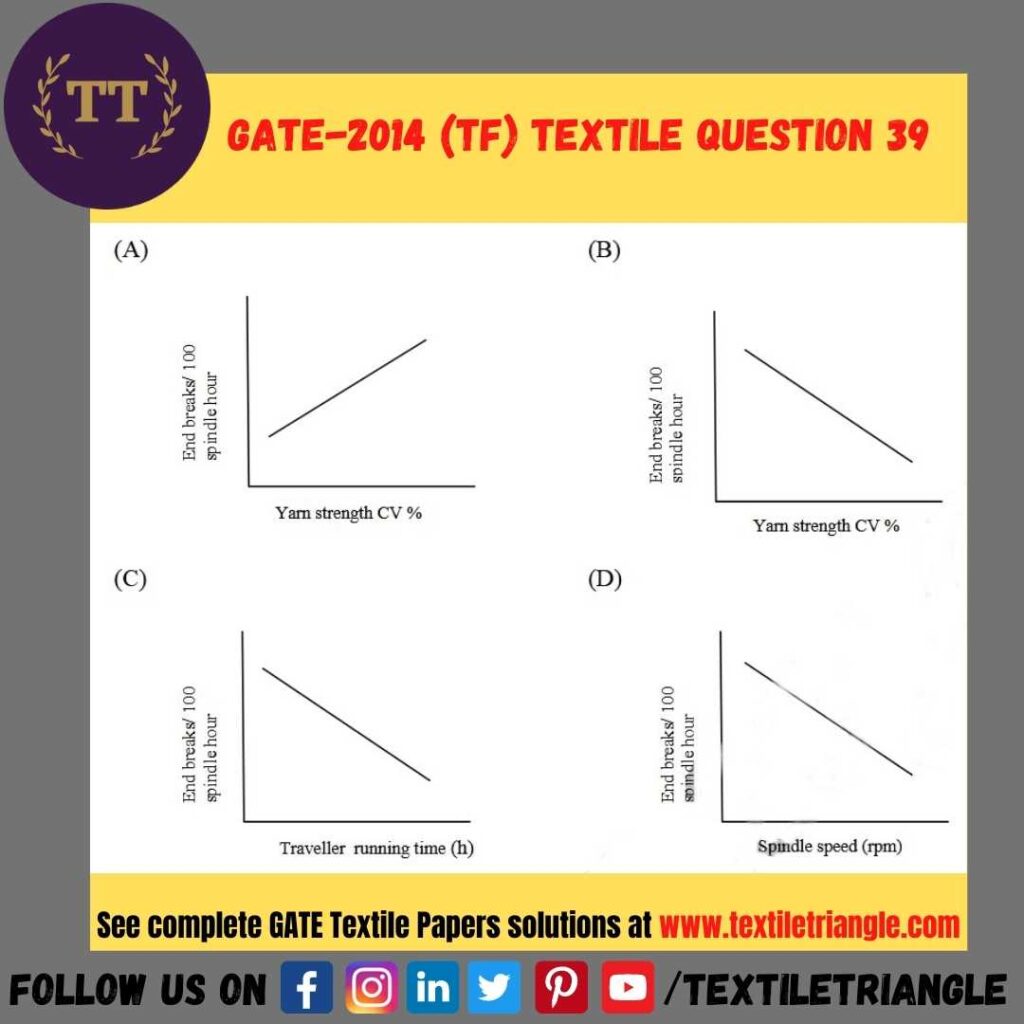Question 39 (Textile Engineering & Fibre Science)
Consider the following figures. Choose the alternative that represents the correct relation

[Show Answer]
Write Here
Frequently Asked Questions | FAQs
What is end breakage rate?
End breakage rate, also known as yarn breakage rate, is a critical parameter used in textile spinning to measure the frequency at which yarns break during the production process. It is usually expressed as the number of yarn breaks per unit of time, typically in terms of breaks per hour (BPH) or breaks per thousand spindle minutes (BPTSM).
End breakage rate is an important quality and productivity indicator in textile spinning, as it directly affects yarn quality, production efficiency, and overall profitability. A higher end breakage rate indicates a lower yarn quality, increased downtime due to yarn breaks, and lower production output, leading to increased costs and decreased productivity. On the other hand, a lower end breakage rate indicates a higher yarn quality, improved production efficiency, and higher productivity.
Various factors can influence the end breakage rate in textile spinning, including but not limited to:
Fiber quality: The quality of the fibers used to produce the yarn, including their length, fineness, strength, and cleanliness, can affect the end breakage rate. Poor quality fibers with higher imperfections or uneven properties can lead to increased yarn breaks.
Spinning process parameters: The settings and conditions of the spinning process, such as spindle speed, twist level, tension, and drafting, can impact the end breakage rate. Properly optimizing these process parameters is crucial to achieving a lower end breakage rate.
Machine condition: The condition of spinning machinery, including the spinning frame, drafting system, and winding mechanism, can affect the end breakage rate. Regular maintenance, proper setup, and calibration of the machines are essential to minimize yarn breaks.
Yarn characteristics: The desired characteristics of the yarn, such as yarn count, twist level, and yarn structure, can impact the end breakage rate. Different yarn specifications may require specific process settings to achieve optimal performance.
Monitoring and controlling the end breakage rate is critical in textile spinning to ensure consistent yarn quality, minimize production downtime, and optimize productivity. Textile manufacturers use various methods to measure and analyze end breakage rate, such as online yarn break detection systems, manual inspection, and statistical process control techniques, and take corrective actions to improve the end breakage rate based on the underlying causes.
